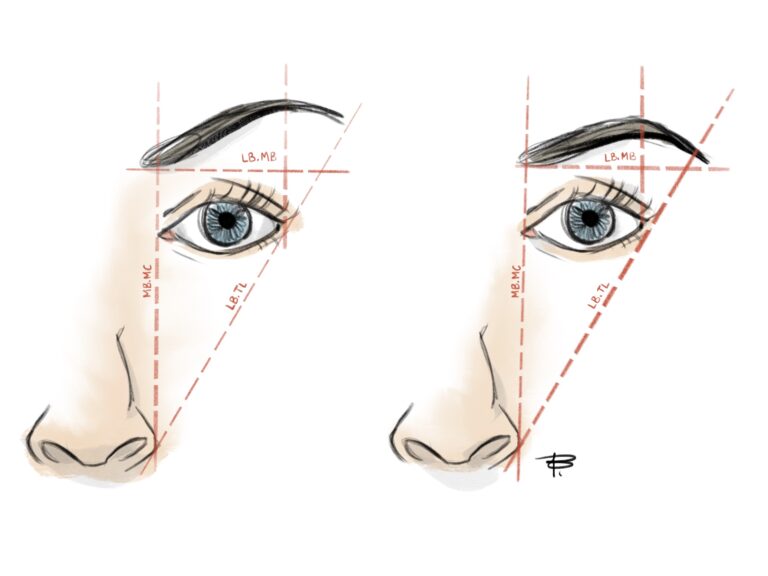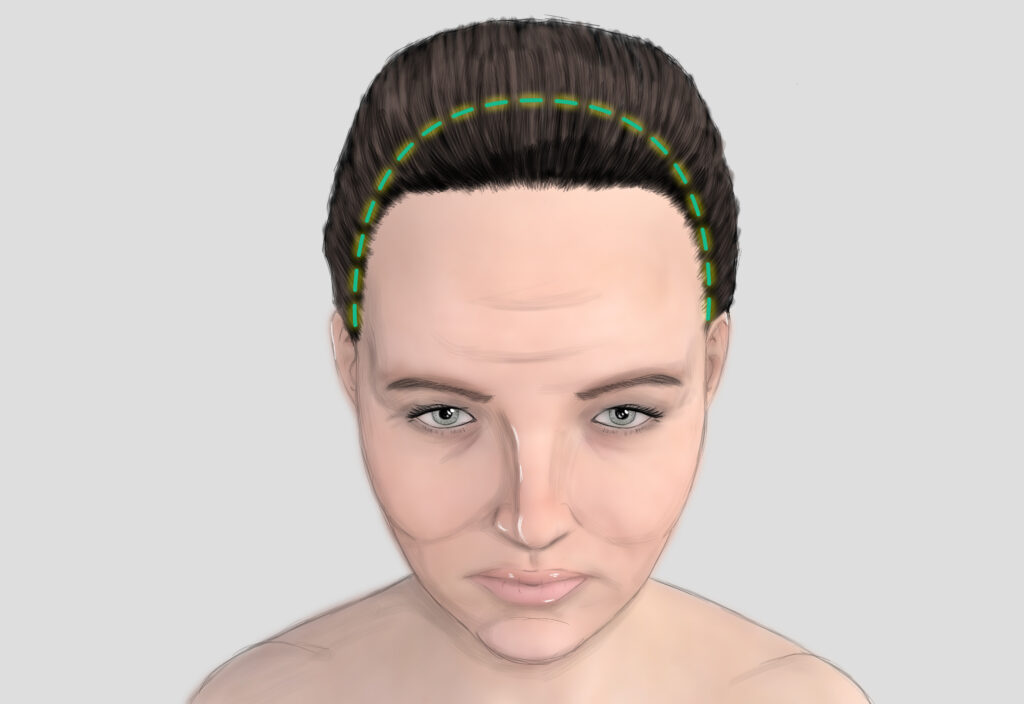Brow lift with Dr. Anil Shah is the procedure used to elevate the brows. Some of the used approaches might include the use of “botulinum toxin” (or Botox), in-office approaches such as facial fillers, skin only lateral brow lift, endoscopic brow lift, and mid forehead direct brow lift. All these mentioned approaches are used to lift the lateral brow portion of the face.
As the eyebrow descends, automatically it can create fullness around the eye. On the other hand, as the brow is lifted up, the fullness along the outside of the upper eye can also be lifted. This gives an idea of how close the relation between eye and eyebrow is and how a close analysis of the two together is necessary.
For more information on Dr. Shah and his approach to brow lift click here.

Male and female eyebrows present some anatomy differences. Usually male brow is heavier while the female brow is ideally more gentle and delicate.
Endoscopic brow lifting has become the most prevalent technique for enhancing the appearance of the brow area. Typically, the best candidates for this procedure are women with a normal to low hairline, thin skin, and a flat forehead. The surgery can be conducted along either the subgaleal or subperiosteal layers. Effective mobilization of the brow is achieved by releasing the periosteum at the arcus marginalis and the orbital ligament, which helps in maintaining long-term results. Different methods are used to secure the brow in place, including polylactic resorbable screws or bone tunnels, although some surgeons successfully maintain brow elevation long-term without any fixation. The endoscopic approach offers the benefits of shorter incisions and a reduced risk of paraesthesias compared to traditional methods.

Lateral brow lifting specifically targets and elevates the outer part of the eyebrows by lifting the subcutaneous tissues in that area. This technique involves making an incision in the temple area within the hairline, which is then utilized to raise the lateral brow. It is a procedure that can be conveniently performed in an office setting for certain patients.

Coronal brow lifting involves an incision made within the hair-bearing scalp that elevates the hairline. The dissection is carried out in the subgaleal plane, providing access to the frontalis, corrugator, and procerus muscles. However, this method is not suitable for patients with high hairlines or those experiencing male pattern baldness, and it often leads to paraesthesias due to severing the deep branch of the supraorbital nerve.
The trichophytic brow lift involves an incision at the anterior hairline, where fine hair exists, using a reverse bevel technique that allows hair to grow through the scar. The pretrichial variant of this lift positions the scar just in front of the hairline. Both methods are particularly beneficial for individuals with high hairlines.

A mid-forehead lift involves making an incision within a horizontal crease on the forehead. In contrast, a direct brow lift involves removing a section of forehead skin directly above the brow. Both techniques are typically used for bald male patients who have noticeable forehead wrinkles, or for patients with significantly uneven brows, such as those with facial paralysis. However, these methods do not target forehead wrinkles or excessive activity of the corrugator muscle.

WHAT IS A BROW LIFT?
A brow lift, also known as a forehead lift, is a cosmetic procedure aimed at rejuvenating the appearance of the forehead, eyebrows, and upper eyelids. It helps to correct sagging eyebrows, forehead wrinkles, and deep furrows, resulting in a more youthful and refreshed appearance.
HOW IS A BROW LIFT PERFORMED?
There are various techniques for performing a brow lift, including traditional methods involving incisions along the hairline or endoscopic approaches that use smaller incisions and a camera for guidance. The choice of technique depends on your unique needs and the surgeon’s recommendation.
WHO IS A GOOD CANDIDATE FOR A BROW LIFT?
Ideal candidates for a brow lift are individuals with sagging eyebrows, deep forehead wrinkles, or frown lines that make them appear tired, angry, or older than they actually are. A consultation with a qualified plastic surgeon is necessary to determine if you are a suitable candidate.
HOW LONG IS THE RECOVERY PERIOD?
Recovery time varies based on the technique used and individual healing factors. Generally, patients can expect some swelling and bruising for about a week, with most returning to regular activities within 2 to 3 weeks. Full recovery may take a few months.
ARE THERE ANY RISKS ASSOCIATED WITH THE PROCEDURE?
As with any surgical procedure, there are potential risks, including infection, scarring, nerve damage, and unsatisfactory results. Choosing a skilled and experienced surgeon greatly reduces these risks.
WILL THE RESULTS LOOK NATURAL?
When performed by a qualified surgeon, a brow lift can yield natural-looking results. The goal is to lift and rejuvenate the brow area without creating an overly “pulled” appearance.
HOW LONG DO THE RESULTS TYPICALLY LAST?
The longevity of the results can vary from person to person. Generally, brow lift results can last anywhere from 5 to 10 years. Lifestyle factors, genetics, and skin care routines can all influence the duration of the results.
IS THE PROCEDURE PAINFUL?
Brow lift procedures are typically performed under anesthesia, ensuring you won’t feel any pain during the surgery. Post-operative discomfort can be managed with prescribed pain medication.
ARE THERE NON-SURGICAL ALTERNATIVES TO A BROW LIFT?
Yes, there are non-surgical options such as Botox and dermal fillers that can temporarily improve the appearance of the brow area. However, these alternatives may not provide the same long-lasting results as a surgical brow lift.
AESTHETIC SKIN NORTH SHORE OFFERS FREE VIRTUAL CONSULTATIONS WITH YOUR FAVORITE PROVIDERS & SAME-DAY BOOKING WITH ALL OF OUR NURSE INJECTORS!
•
BOOK YOUR CONSULTATION TODAY!